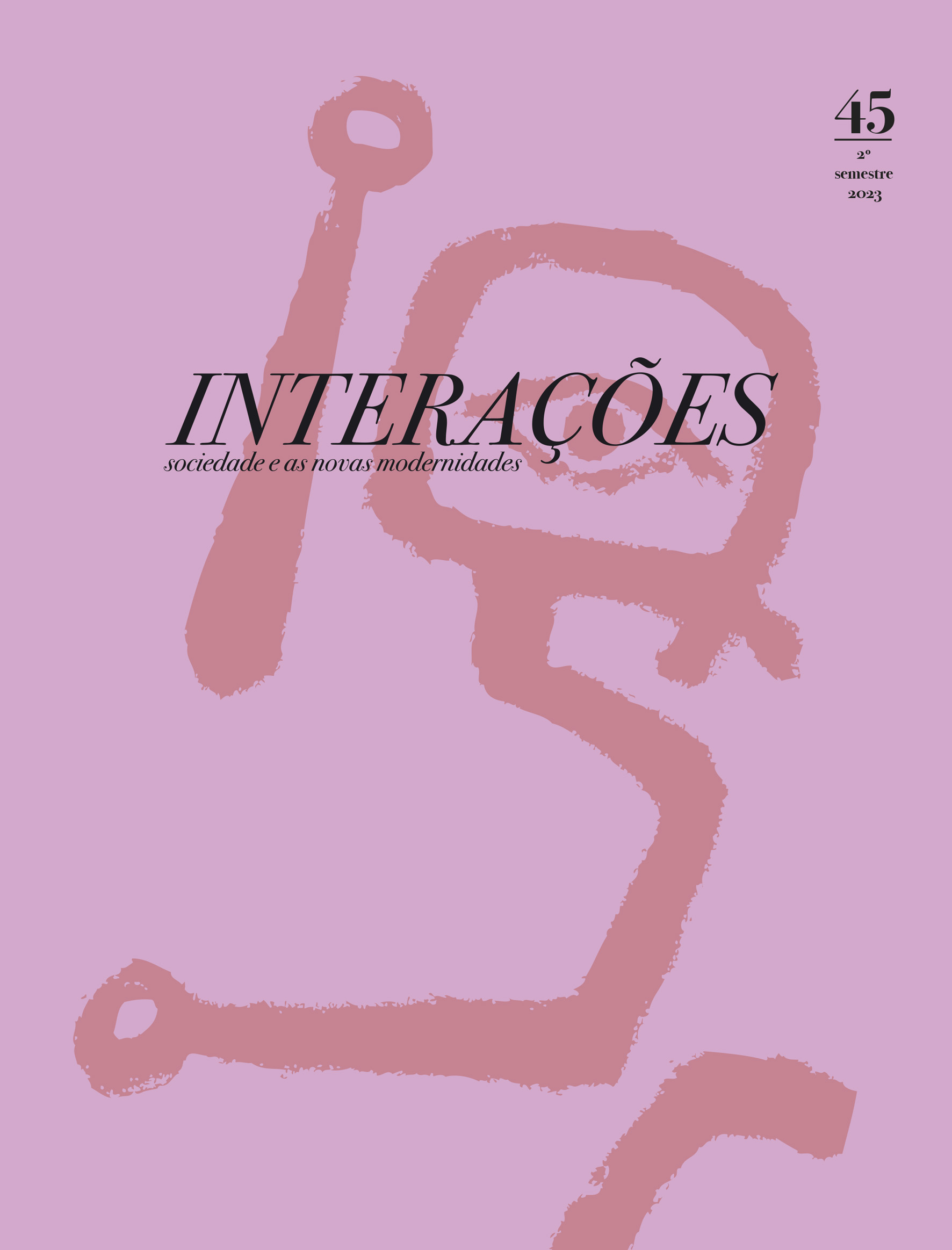Painting Sensations
Unveiling the Visual Rhetoric of Pathos in Bacon’s Images Through the Lens of Deleuze’s Transcendental Empiricism
DOI:
https://doi.org/10.31211/interacoes.n45.2023.a5Keywords:
Francis Bacon, Image-sensation, Pathos, Sign, Visual rhetoricAbstract
Bacon’s paintings are images-sensations, a figurative art that composes a visual rhetoric of pathos. It is a rhetoric of sensations centred on the effects of visual signs on the spectators/viewers. The pathos is something perceptive and sensitive that happens in the spectators/viewers; it is driven, incited, provoked by Bacon’s images. The pathos is indistinctly caused by the intentional and strategic use of a visual language. The meanings of the visual signs are formed a priori and transmitted as clearly as possible in reference to a given situation, activity, event, reality/world. If this is so, the use of rhetoric is emphatic to explore the pathos instigated by Bacon’s images-sensations. Following a theoretical and conceptual approach and through the lens of Deleuze’s perspective, the aim is to show the power of visual rhetoric when provoking sensations, and to problematize the representation and report of reality as a changing process through signs/images. This is demonstrated by Bacon’s images-sensations and Deleuze’s transcendental empiricism perspective. In a semiotic perspective, Bacon’s paintings are a perfect anchorage to understand the influence of an aesthetical language and practice of image as a visual rhetoric resource, which amplify the pathos.
Downloads
References
Aristotle. (2004). The art of rhetoric. Penguin Classics.
Augustin. (1991). De dialectica. Humanitas.
Barthes, R. (1977). Image-music-text. Fontana Press.
Barthes, R. (1982). Camera lucida: Reflections on photography. Hill & Wang.
Barthes, R. (1988). The semiotic challenge. Basil Blackwell.
Barthes, R. (1991). Mythologies. The Noonday Press.
Berkeley, G. (1999). Principles of human knowledge. Oxford University Press.
Deleuze, G. (1968). Différence et répetition. Presses Universitaires de France.
Deleuze, G. (1969). Logique du sens. Les Éditions de Minuit.
Deleuze, G. (2003a). Francis Bacon: The logic of sensation. Continuum.
Deleuze, G. (2003b). Proust e os signos. Forense Universitária.
Deleuze, G. (2014). Proust et les signs. Presse Universitaire de France.
Eco, U. (1986). Semiotics and the philosophy of language. Indiana University Press.
Ficacci, L. (2007). Francis Bacon. Taschen.
Hinton, D. (Director). (1985). South Bank Show: Francis Bacon. [Documentary].
Lotz, C. (2009). Representation or sensation? A critique of Deleuze’s philosophy of painting. Canadian Journal for Continental Philosophy (13-1), 59-73.
Meyer, M., Carrilho, M. M., Timmermans, B. (1999). Histoire de la rhétorique: Des grecs à nos jours. Librairie Générale Française.
Ogden, C. K. & Richards, I. A. (1923). The meaning of meaning. A Harvest Book.
Peirce, C. (1978). Collected papers. (5 vols.). Harvard University Press.
Peters, F. E. (1967). Greek philosophical terms: A historical lexicon. New York University Press.
Plato. (1997). Phaedrus. Cambridge University Press.
Plato. (2004). Gorgias. Penguin Classics.
Ricoeur, P. (1959). Le symbole donne à penser. Esprit (27/7-8), pp. 60-76.
Ricoeur, P. (1988). O conflito das interpretações. Rés-Editora.
Ricoeur, P. (2013). A simbólica do mal. Edições 70.
Downloads
Published
How to Cite
Issue
Section
License
Copyright (c) 2023 Paulo Barroso

This work is licensed under a Creative Commons Attribution-NonCommercial 4.0 International License.
The copyright of published works is retained by the author who grants Interações the original publication right. The published article can be used freely for educational, non-commercial purposes, in accordance with the Creative Commons License - Attribution-Non-Commercial 4.0 International, provided that the author, the title of the article, the title and number of the journal are cited together with the URL or DOI of the article.



